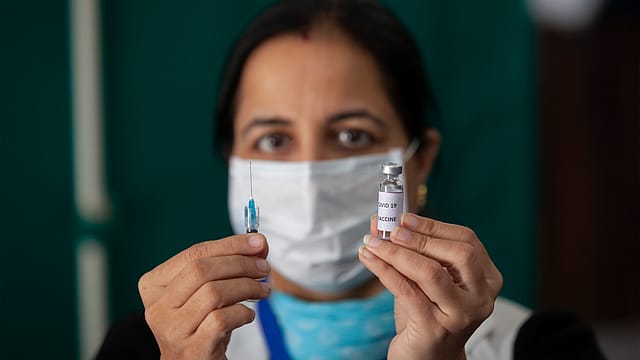A day in the life of a Covid-19 vaccine dry run
ADVERTISEMENT

On Friday, January 8, India conducted its third dry run for the nationwide Covid-19 inoculation programme. As per a statement from the ministry of health and family welfare, the dry run was conducted across 4,895 session sites, which in turn were spread across 615 districts in 33 states and union territories.
Earlier, the country saw two such iterations of the programme. The first drill—conducted on December 28, 2020—continued for two days, but was limited in scope. During that time, only four states were covered, namely, Andhra Pradesh, Assam, Gujarat, and Punjab. As per the health ministry, the first nationwide dry run started on January 2, covering 259 sites across 116 districts.
These series of dry runs were conducted before the onset of the actual vaccination programme. India welcomed the new year by approving two Covid-19 vaccine candidates: Covishield, which is jointly developed by pharmaceutical major AstraZeneca and Oxford University and is manufactured by Pune-based Serum Institute of India. The other candidate approved was Covaxin, the indigenous vaccine developed by Bharat Biotech and Indian Council of Medical Research (ICMR). On January 3, the DCGI gave the final nod for roll-out to both the vaccines.
December 2025
The annual Fortune 500 India list, the definitive compendium of corporate performance, is out. This year, the cumulative revenue of the Fortune 500 India companies has breached $2 trillion for the first time. Plus, find out which are the Best B-schools in India.
Fortune India's photo team visited one such dry run programme in Gurugram, following the entire trajectory of one health worker, from waiting, to verification of documents, to the way the vaccine is administered. The photographs below delineate the entire steps that the actual vaccination programme, as and when it begins, would have to follow.
The individual arrives at a session site. The session site here is a government school in Gurugram. As can be clearly seen, social distancing protocols are all in place, and each person awaiting their turn are made to stand at least six feet away from each other.
The individual, after her turn has come, goes to a counter on the outer veranda of the session site. Here her temperature is checked. This counter is also the place where the initial verification of photo identification is conducted. After the verification process is through, the individual is allowed to go inside.
Once inside, here too, social distancing protocols are maintained strictly. This photo here is from the waiting area where the individuals await their turn.
In many ways a crucial step, before the person is vaccinated, her credentials are thoroughly verified. The person would have to be enrolled in the Co-Win app, which is especially prepared by the government for the Covid-19 inoculation drive. The verification process includes cross-checking the person's details that have been entered in the app with the actual documents, such as a PAN card or Aadhaar.
A closer look at the verification process.
After the verification process is completed, the individual is allowed to proceed towards the final steps, which is when she is administered the vaccine. The next few photographs depict this.
Once the vaccination is done, the individual's details are updated again in the Co-Win app. The individual receives an SMS with details about the next date and time for administering the second dose of the vaccine.
A crucial part of any vaccination programme is also what follows after the vaccine has been administered. And this step entails monitoring the individual's health and to know whether any adverse drug reaction has set in. For this, the individual is asked to wait in an observation room for 30 minutes.
